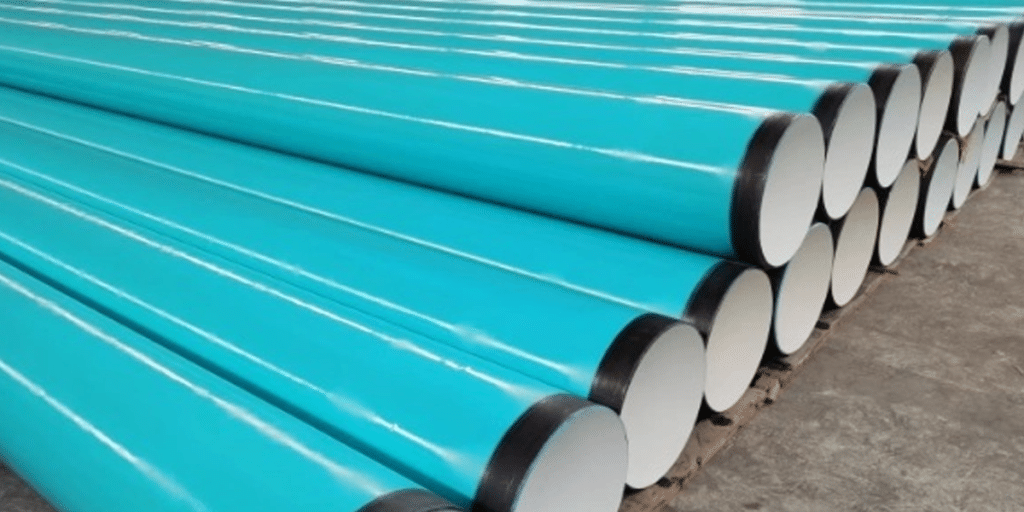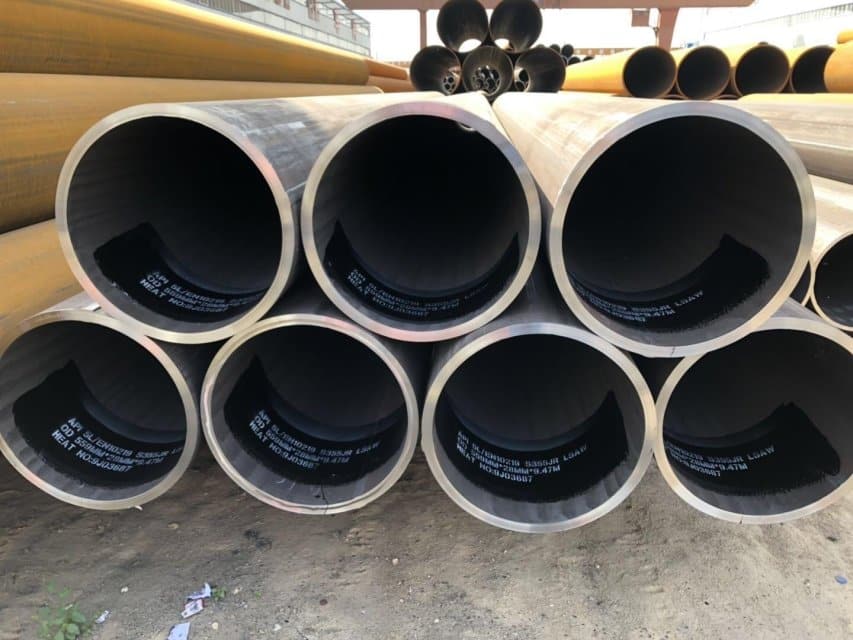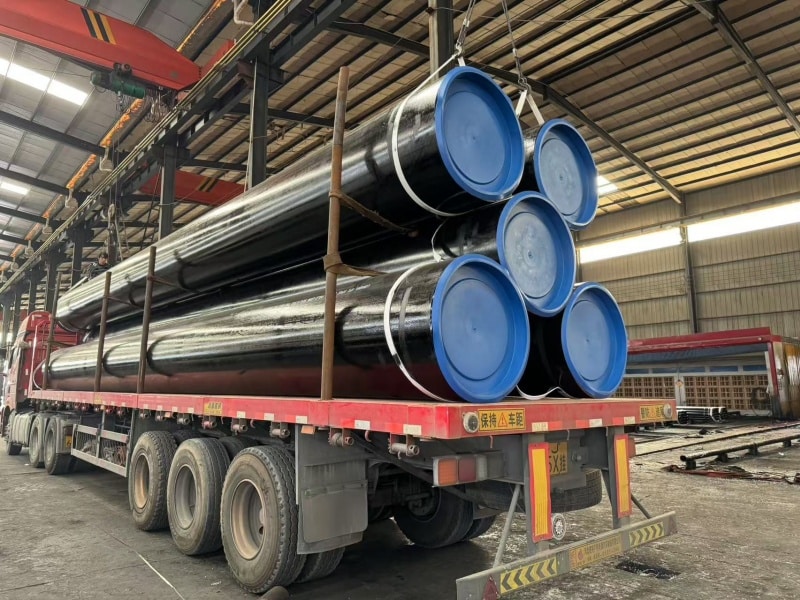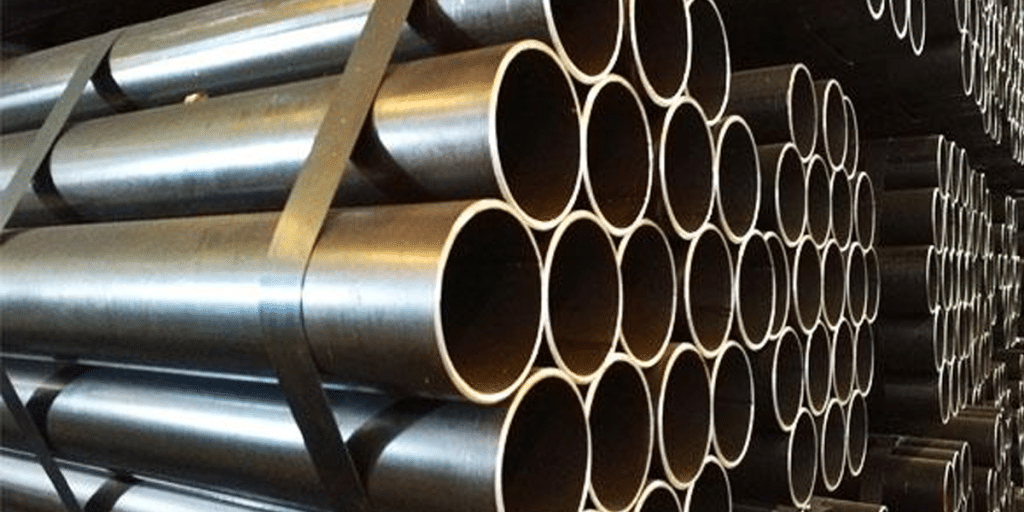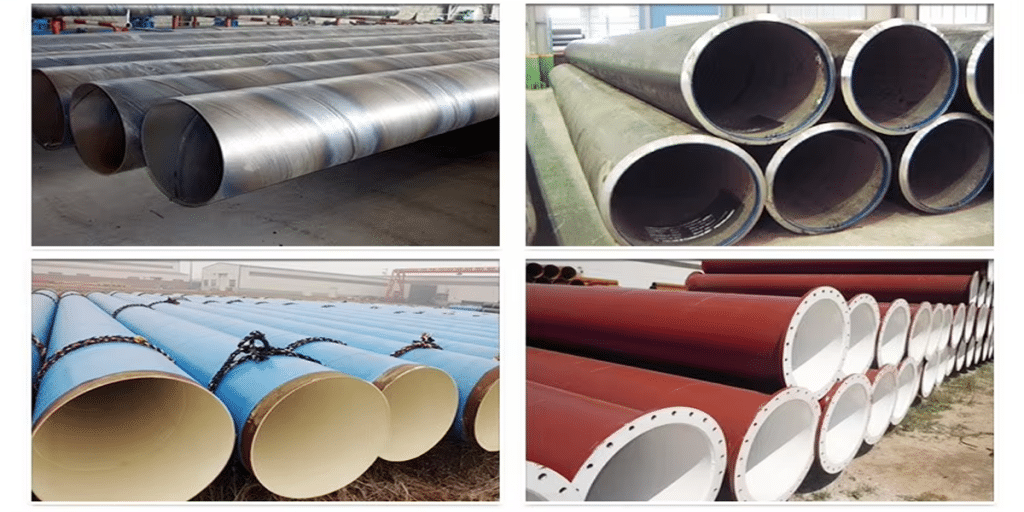- 1. Overview and Technical Advantages of ASTM A671 Standard
- 2. Case Study 1: Central Asia Natural Gas Pipeline Trunk Line Project
- 3. Case Study 2: North African Coastal LNG Receiving Terminal Project
- 4. Case Study 3: European District Heating Infrastructure Upgrade Program
- 5. Why Is ASTM A671 Frequently Specified for Cross-Border Pipeline Projects?
Against the backdrop of a global shift in energy structures, multinational infrastructure projects are advancing at an unprecedented pace, particularly in sectors like natural gas, oil, and power. As a critical material in pressure-bearing transportation systems, ASTM A671 steel pipes have gained increasing prominence in the material lists of international energy projects due to their excellent mechanical properties and reliable weldability. Whether in Middle Eastern LNG terminals or energy corridors between Central and South Asia, ASTM A671 has proven itself in numerous real-world scenarios, with many ASTM A671 engineering cases now serving as industry benchmarks.
As engineering specification standards become increasingly stringent, “ASTM A671 for international pipelines” is no longer just a technical reference—it is becoming a cornerstone for project reliability. With the rapid expansion of LNG infrastructure, welded steel pipe for LNG projects is appearing more frequently in project documentation, reinforcing the critical role A671 pipes play in cross-border infrastructure pipe selection.
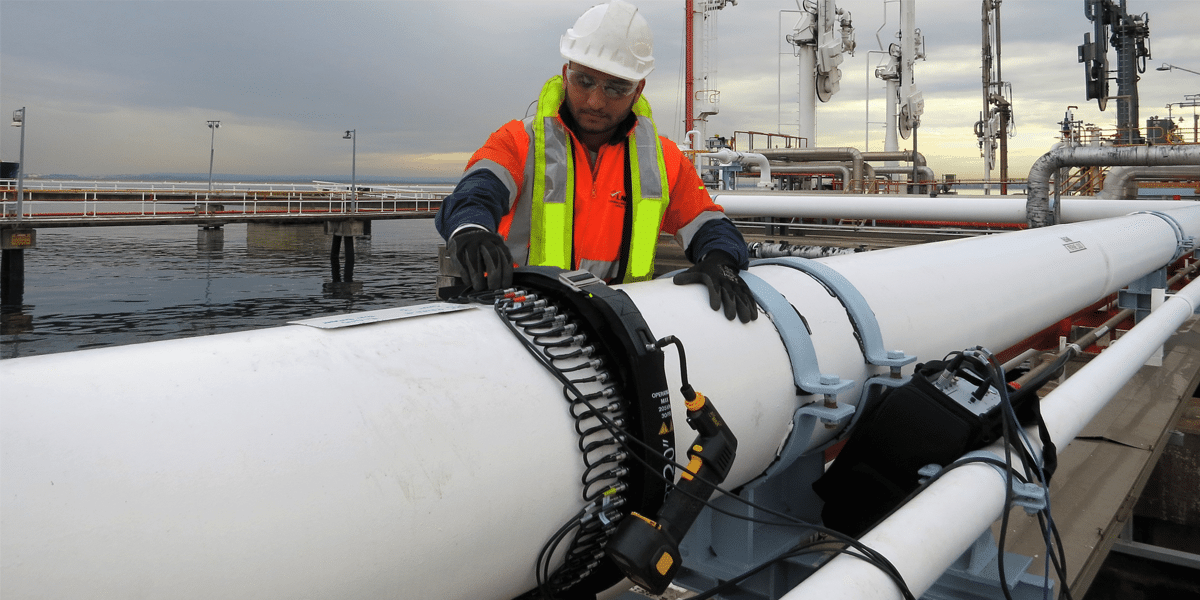
Overview and Technical Advantages of ASTM A671 Standard
Overview and Technical Advantages of ASTM A671 Standard ASTM A671 is a specification developed by ASTM International, applicable to electric-fusion-welded carbon steel pipes designed for pressure service at atmospheric and lower temperatures. It is widely used in oil transmission lines, natural gas grids, LNG facilities, refineries, and various cross-border energy engineering projects. The A671 pipe is produced by welding plates that have been heat-treated—typically normalized or normalized and tempered—using electric-fusion welding (EFW). This process combines the high strength of the base material with excellent weld integrity, making it especially suitable for critical applications with stringent weld requirements. Among the many standards for international energy project pipe applications, ASTM A671 stands out with several key technical advantages:
1. Versatile Material Grades for Broad Adaptability
ASTM A671 allows for multiple steel grades (such as Grade B, Grade 60, and Grade 70), enabling engineers to select materials based on project pressure ratings, temperature conditions, and environmental factors. For instance, in certain cross-border LNG terminals, Grade 70 is frequently specified due to its excellent low-temperature impact resistance, meeting specific engineering specification standards.
2. Reliable Weld Quality for Critical Infrastructure
With its requirement for automatic arc welding and comprehensive non-destructive examination (NDE) of welds, A671 pipes ensure long-term weld integrity. This makes them highly suitable as welded steel pipe for LNG projects. Such quality assurance is a key factor in their adoption in cross-border infrastructure pipe selection.
3. Designed for Low and Moderate Temperature Environments
ASTM A671 pipes are ideal for use in regions with low ambient temperatures or large diurnal fluctuations. Numerous ASTM A671 engineering cases have demonstrated their excellent performance in cold-climate pipeline systems.
4. Cost Efficiency Compared to Seamless Pipes
EFW-welded pipes offer a significant cost advantage over seamless alternatives, especially in large-diameter and high-volume applications. In many projects labeled as “ASTM A671 for international pipelines,” this cost-effectiveness plays a crucial role in procurement strategy while maintaining the required quality standards.
Case Study 1: Central Asia Natural Gas Pipeline Trunk Line Project
1. Project Overview
The Central Asia Natural Gas Pipeline is one of the most iconic international energy cooperation projects under the Belt and Road Initiative. The main trunk line stretches across several countries, transporting natural gas from Central Asia to China via cross-border infrastructure.
Coverage: Over 500 km of cross-border pipeline, spanning Turkmenistan, Uzbekistan, Kazakhstan, and connecting to western China
Transport Capacity: 20 billion cubic meters per year (20 bcm/year)
Strategic Importance:
Enhances China’s diversified energy supply structure
Strengthens cross-border infrastructure integration
Facilitates long-term stable gas export revenues for Central Asian countries
This project is a prime example of cross-border infrastructure pipe selection, requiring advanced materials to meet multi-country regulatory and technical demands.
2. Material Selection and Standard Requirements
Selection Principles: The pipeline spans long distances through deserts, mountainous regions, and extreme climates, demanding pipe materials with:
High pressure resistance over long distances
Excellent weldability to suit varying construction methods
Outstanding durability and corrosion resistance in harsh environments
Selected Material and Specifications:
Steel Grade: ASTM A671 Grade CB60
Diameter: Φ914 mm (36 inches)
Wall Thickness: 20 mm
Manufacturing Process: Electric arc welded (SAW), pressure tested, with external anti-corrosion coating
The ASTM A671 Gr. CB60 steel pipe is particularly suited for low to moderate temperature and pressure conditions, making it ideal for long-haul, buried natural gas pipelines.
3. Technical Highlights
Dual Standard Compliance: All pipes used in the project meet not only the ASTM standard, but also comply with:
EN (European Norms)
ISO (International Organization for Standardization)
This level of compliance makes ASTM A671 a recognized choice for ASTM A671 for international pipelines, enabling seamless cooperation across national technical systems.
Independent Third-Party Certification: Quality inspection and certification were carried out by SGS, a global authority in testing and verification
Testing scope included:
Chemical composition & mechanical properties
Non-destructive testing (NDT)
Weld seam inspection
Hydrostatic pressure testing
Ensures full compliance with engineering specified standards and long-term operational safety
On-Site Adaptability
The selected material demonstrated excellent weldability, compatible with both automatic submerged arc welding and multi-pass manual welding used along various terrain segments
Combined use of pre-fabricated segments and on-site welding increased efficiency and safety, especially in extreme climates
Example of Natural Integration: The Φ914 mm pipes used in this project have since become reference models for similar welded steel pipe for LNG projects, showcasing the application of ASTM A671 in other international energy projects.
4. Industry Significance
This was the first large-scale application of ASTM A671 Gr. CB60 in a Central Asian cross-border trunk pipeline
It enhanced the international visibility and credibility of Chinese-manufactured welded steel pipes
The project serves as a benchmark for future global projects requiring engineering specified standards, providing a replicable model for material selection and quality control
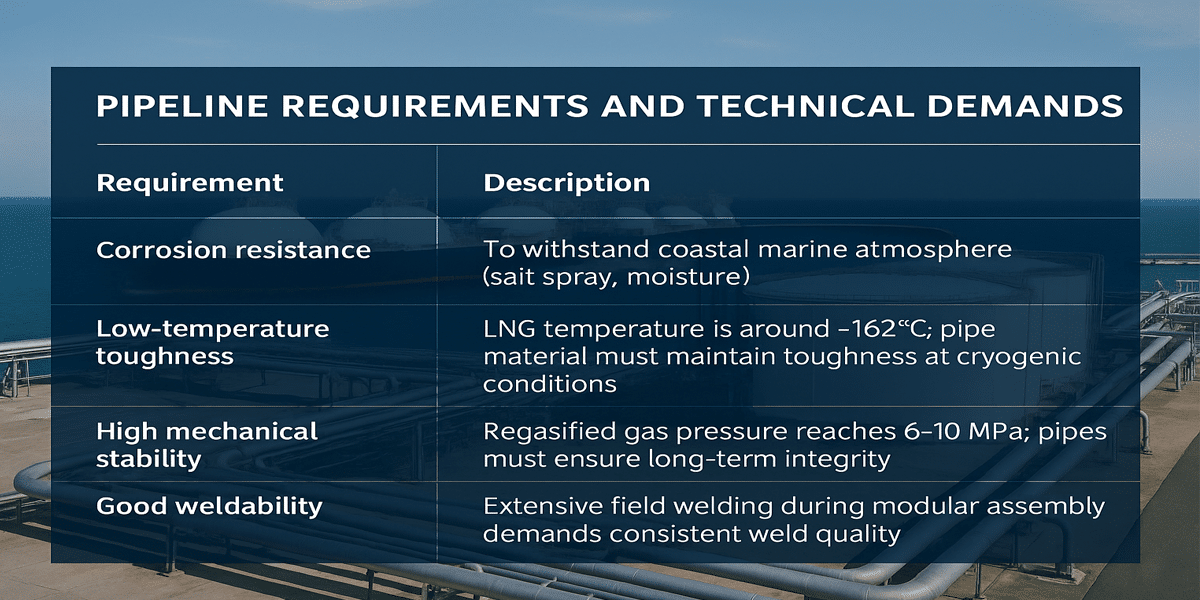
Case Study 2: North African Coastal LNG Receiving Terminal Project
1. Project Overview: LNG Receiving, Regasification, and Distribution System
This project is located along the Mediterranean coast of a North African country. It forms part of the national energy transition plan, aiming to introduce imported LNG and establish an efficient receiving, storage, regasification, and distribution system. It is considered one of the most representative international energy projects in North Africa in recent years.
Project components:
LNG unloading terminal
Cryogenic ground storage tanks
LNG regasification units (vaporization and heat exchange)
High-pressure gas transmission pipeline (connecting to the national grid and city distribution network)
Strategic significance: To alleviate inland energy shortages and support rising demand for power generation and industrial natural gas.
International cooperation: Jointly invested by European energy companies and the national energy utility, with EPC contractors from France and the Middle East. Some key equipment and materials were supplied by Chinese enterprises.
2. Pipeline Requirements and Technical Demands
The internal piping network of the LNG terminal covers cryogenic LNG transport, post-regasification high-pressure gas transmission, and connection to external pipelines. This imposes specific technical demands on pipe materials:
3. Material Selection and Technical Advantages
After multiple rounds of testing and technical comparison, the project selected:
Standard: ASTM A671 Grade CC60 / CB60 welded steel pipes
Common dimensions: Pipe diameters of Φ610 mm and Φ762 mm, with wall thicknesses of 12–18 mm
Post-processing: Pipes were treated with PWHT (Post Weld Heat Treatment) to enhance structural stability
Material performance highlights:
Pressure resistance: PWHT treatment homogenizes weld microstructure and improves high-pressure performance
Low-temperature resistance: Remains tough at temperatures as low as -50°C
Corrosion protection: Triple-layer PE or epoxy coatings used; cathodic protection applied within the terminal
Weldability: Controlled carbon equivalent ensures good HAZ properties and high welding pass rates
ASTM A671 has become a preferred material for international pipelines involving LNG applications, due to its versatility and reliability in both cryogenic and high-pressure environments.
4. Application Areas: In-Station Pressure Networks and Regasification Connections
These welded steel pipes were primarily used in:
Pipelines connecting LNG storage tanks to regasification modules
High-pressure gas pipelines after regasification, leading to off-site trunk lines
Main gas corridors between pressure regulation and metering units within the station
This section links the cryogenic fluid system and the high-temperature transmission system, making it a key application case of welded steel pipe for LNG projects.
5. Project Feedback and Efficiency Gains
According to the construction and operations teams, the pipeline system demonstrated the following advantages:
High welding efficiency and precision:
Pipes had excellent dimensional control (roundness, straightness), with field weld misalignment under 1 mm
Over 95% one-pass welding success rate, significantly reducing rework and inspection costs
Shortened delivery timeline:
Combined use of prefabrication and fast on-site welding
Modular supply of components improved construction efficiency
Overall delivery time was reduced by approximately 15%
Stable long-term performance:
After two years of operation, no signs of stress corrosion, joint leakage, or pressure anomalies have been observed
System pressure remains within safe parameters across all operational modes
This project successfully demonstrated the applicability of ASTM A671 in LNG terminal infrastructure and has since served as a reference case for other international energy projects involving similar requirements.
Case Study 3: European District Heating Infrastructure Upgrade Program
1. Project Context: Urban Thermal System Revamp Driving Low-Carbon Transition
This project is part of a large-scale initiative across several European countries to modernize outdated district heating networks as a key step in achieving energy efficiency and reducing carbon emissions.
Countries involved: Germany, Poland, Czech Republic, Austria, and other Central & Eastern European nations
Service areas: Urban residential zones, industrial parks, and public buildings connected to centralized heating
Core objectives: Replace aging pipelines and insulation systems built in the 20th century, increase system capacity (temperature and pressure), and integrate renewable energy sources into district energy scheduling
The initiative is supported by EU “Green Deal” policies and energy transition funding, and it serves as a model of cross-border infrastructure pipe selection.
2. Specified Material: ASTM A671 Welded Steel Pipes
Following extensive technical evaluations and testing, the project designated:
Material standard: ASTM A671 Grade CC60 / CB60 series welded steel pipes
Pipe dimensions: Mainly Φ406mm to Φ914mm, wall thickness between 12–22mm
Surface treatment: External high-performance insulation layer (polyurethane + HDPE jacket) and internal epoxy anti-corrosion lining
This material offers a balanced combination of heat resistance, pressure capacity, and weldability, making it suitable for long-term operation in district heating systems.
3. Standards Compliance: Meeting Both EU and National Regulations
All piping systems in the project were required to comply with multiple overlapping standards, including:
EN 253, EN 448 – European standards for pre-insulated piping
ISO 3183 – International standard for pipeline transportation systems
ASTM A671 – Used as the core manufacturing standard for steel pipe bodies
Third-party certification (TÜV, DEKRA, etc.) was required for type approval and system performance testing, ensuring safety and compliance across varied operational conditions.
4. Key Advantages: Superior Pipe Performance and System Efficiency
ASTM A671 demonstrated significant performance advantages in the project:
High-temperature resistance: Withstands sustained hot water circulation above 140°C, suitable for cold-region winter operations
Welding reliability: Controlled carbon equivalent ensures uniform weld zone properties and reduces leakage risk
Modular adaptability: Supports factory prefabrication and fast on-site assembly—ideal for urban construction
Energy efficiency: Advanced insulation plus internal anti-corrosion lining reduced thermal loss by 30%
Low lifecycle cost: 30+ years design life with minimal maintenance versus traditional seamless systems
5. Project Highlights and Field Feedback
Rapid deployment:
Prefabricated pipe sections enabled installation of up to 1 km per 3 days, minimizing urban traffic disruptions
System compatibility: Seamless integration with legacy infrastructure reduced commissioning costs
Stable operation: The Kraków section in Poland, fully operational since winter 2023, showed superior reliability and high user satisfaction
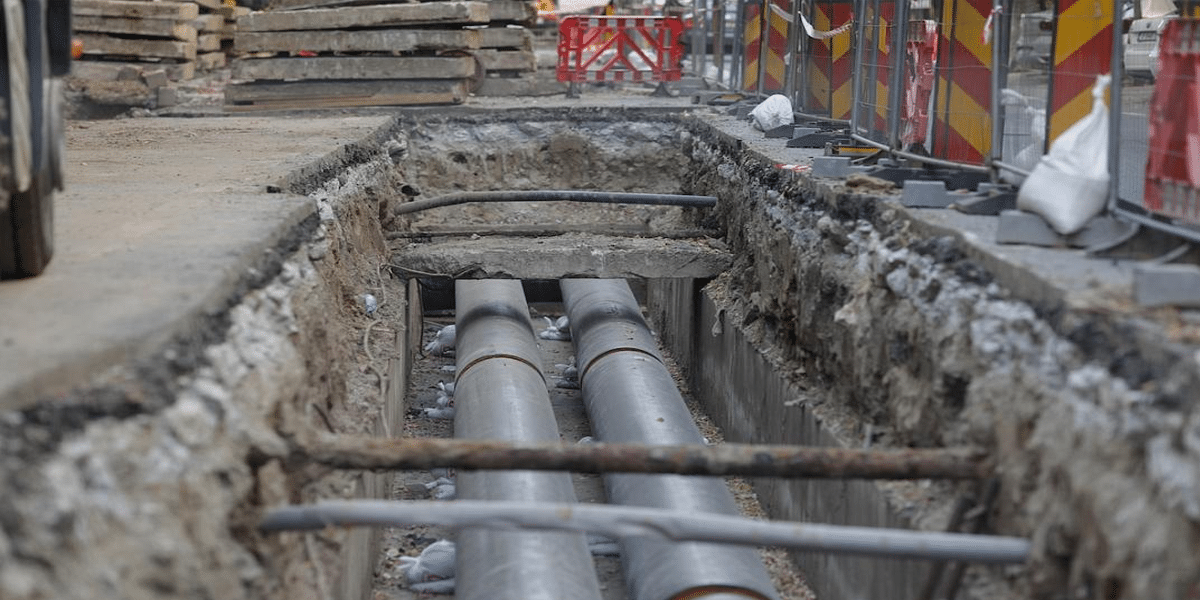
Why Is ASTM A671 Frequently Specified for Cross-Border Pipeline Projects?
ASTM A671 is a standard issued by ASTM International for electric-fusion-welded (EFW) low-alloy steel pipes, designed primarily for high-pressure, high-temperature, or low-temperature service in large-diameter applications. In a growing number of long-distance energy transmission, LNG infrastructure, and district heating upgrades, ASTM A671 has become a preferred material specification for international infrastructure development.
1. Technical Reliability for Diverse Operating Conditions
ASTM A671 pipes, typically EFW-formed and made from plate materials like A516 Gr. 60/65/70, can be tailored to various grades (e.g., CC60, CB60, CC65, CC70) and post-weld heat-treated to optimize mechanical and structural performance.
High pressure resistance: Suitable for 5–15 MPa pipelines, ideal for natural gas, hot water, or LNG flow
Excellent weldability: Controlled carbon equivalent ensures stable HAZ and tight weld seams
Low-temperature suitability: Grades like CC60 retain ductility at -46°C, critical for LNG systems
Post-Weld Heat Treatment (PWHT): Enhances structural integrity and crack resistance
Wide size range: Common diameters from Φ406 to Φ1219 mm, thickness up to 25 mm, ideal for trunk lines
2. Globally Compatible Standard System
Compared to region-specific standards (e.g., EN 10217 or GOST), ASTM A671 offers greater international compatibility and project-level flexibility:
Aligns with ISO and EN: Frequently integrated alongside ISO 3183 and EN 10217 for pipeline systems
Technically customizable: Project specs can define base plate grades, welding processes, and thermal treatments
Recognized by international testing bodies: ASTM A671 is widely accepted by third-party certifiers such as SGS, BV, TÜV, etc.
These features make ASTM A671 an effective engineering designated standard and a common “technical language” for multinational EPCs and developers.
3. Widely Applicable in Global Energy Infrastructure
ASTM A671 has been successfully deployed in several core sectors:
LNG receiving and regasification terminals – for cryogenic pipelines and connection sections
Cross-border natural gas trunklines – including projects in Central Asia and Russia-Turkey transit corridors
Urban district heating systems – integrated with EN 253-compliant insulation systems
Nearshore and offshore energy connectors – linking coastal terminals and offshore platforms
As such, ASTM A671 is often specified in international tenders and appears under the “preferred pipe material” category in major engineering documents – a growing trend in ASTM A671 for international pipelines.
4. Cost Efficiency and Fast Delivery
Compared with seamless pipes, ASTM A671 EFW welded pipes provide significant cost and scheduling advantages:
Lower manufacturing cost: 15–30% savings over seamless equivalents in raw material and processing
Shorter lead time: Efficient for batch production, crucial for time-sensitive pipeline builds
Suited for modular supply: Facilitates factory-fabricated spool segments for faster on-site assembly
In modern pipeline projects where delivery speed and lifecycle cost are central to technical evaluation, ASTM A671 has become a competitive material choice.
As international infrastructure projects continue to grow in complexity and scale, the importance of reliable, standards-compliant pipe materials like ASTM A671 becomes even more critical. With proven performance across cross-border energy transmission, LNG systems, and district heating networks, ASTM A671 remains a smart, forward-looking choice for engineers, developers, and EPC contractors worldwide.
We welcome industry partners, clients, and technical experts to explore more about our ASTM A671 engineering cases and solutions tailored for international energy projects. You’re warmly invited to visit our facilities, review our production capabilities, and discuss how we can support your next pipeline project. Let’s build reliable infrastructure—together!

